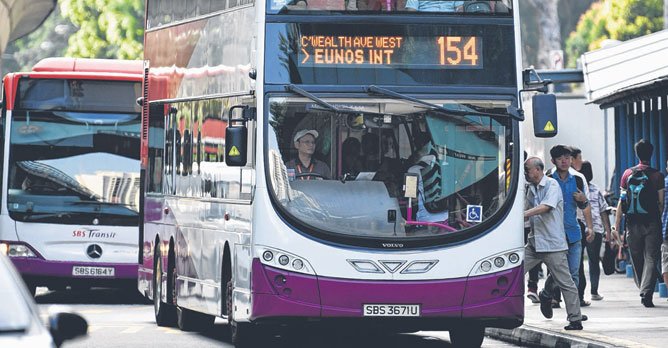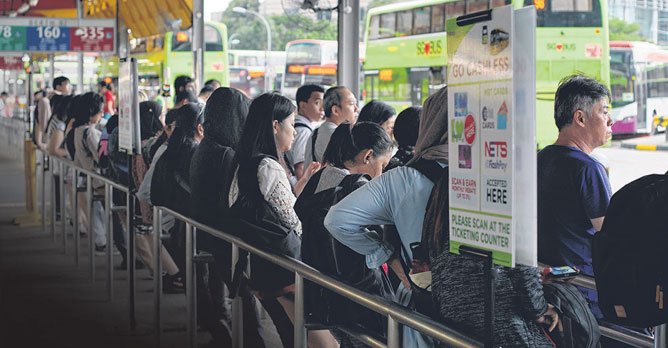Public transport usage plummets as more stay home
26 Mar 2020|702 views
Public transport in major cities around the world has taken a hit from the COVID-19 outbreak, with ridership falling by as much as 90% in some places.
According to data collated by Israeli mobility app company Moovit, public transport ridership has decreased significantly in major cities around the world.
"With many residents working from home, avoiding transit to minimise their exposure to the disease, and vast changes in local transit services, the way people travel within their cities has been altered," the company said in a statement on 25 March 2020.
Based on data collated from 750 million Moovit users, public transport ridership has fallen by an average of 62% since the beginning of the year when the COVID-19 outbreak started to spread.
Some cities are worse off than others. Singapore, for instance, has seen its public transport ridership slip by nearly 21% since January. While modest in relation to the decrease seen in other places, the shrinkage comes on the back of a continuous rise in public transport ridership for the past several years.
Hong Kong, Taipei and Seoul each saw their numbers fall by more than 40%, while Tokyo's fell by 77%. Italy, which is arguably the worst hit by the pandemic, has seen its commuting numbers plunge by more than 90% in cities like Florence and Naples.
The United States, where the virus is starting to take a significant toll, has seen transit ridership drop by 50% or more. Ridership in San Francisco, for instance, has plunged by more than 70%, while in New York City, it has fallen by about 60%.
In South-East Asia, Bangkok's transit ridership has fallen by nearly 50%, while Kuala Lumpur's has plummeted by 76%. Moovit, which claims to be the world's largest repository of transit and urban mobility data, did not provide data on China.
Singapore's transit ridership shrinkage of about 20% was cited earlier by Transport Minister Khaw Boon Wan, who also said "transport ambassadors" will be deployed at MRT stations to ensure trains were not too crowded.
Engineer Ng Guan Hong, 50, said he has been working from home on alternate days, so "I still take public transport to work". He noted that trains are less crowded now, and he takes some precautions to stay safe. "I do not wear a mask, but I make sure I wash my hands once I reach my office," he said. "And I report to work slightly later to keep away from peak-hour crowds."
Author Jimmy Chua, 36, said, "My wife and I work from home these days. But once every few days, we still take the MRT to shop or for meals."
Public transport in major cities around the world has taken a hit from the COVID-19 outbreak, with ridership falling by as much as 90% in some places.
According to data collated by Israeli mobility app company Moovit, public transport ridership has decreased significantly in major cities around the world.
"With many residents working from home, avoiding transit to minimise their exposure to the disease, and vast changes in local transit services, the way people travel within their cities has been altered," the company said in a statement on 25 March 2020.
Based on data collated from 750 million Moovit users, public transport ridership has fallen by an average of 62% since the beginning of the year when the COVID-19 outbreak started to spread.
Some cities are worse off than others. Singapore, for instance, has seen its public transport ridership slip by nearly 21% since January. While modest in relation to the decrease seen in other places, the shrinkage comes on the back of a continuous rise in public transport ridership for the past several years.
Hong Kong, Taipei and Seoul each saw their numbers fall by more than 40%, while Tokyo's fell by 77%. Italy, which is arguably the worst hit by the pandemic, has seen its commuting numbers plunge by more than 90% in cities like Florence and Naples.
The United States, where the virus is starting to take a significant toll, has seen transit ridership drop by 50% or more. Ridership in San Francisco, for instance, has plunged by more than 70%, while in New York City, it has fallen by about 60%.
In South-East Asia, Bangkok's transit ridership has fallen by nearly 50%, while Kuala Lumpur's has plummeted by 76%. Moovit, which claims to be the world's largest repository of transit and urban mobility data, did not provide data on China.
Singapore's transit ridership shrinkage of about 20% was cited earlier by Transport Minister Khaw Boon Wan, who also said "transport ambassadors" will be deployed at MRT stations to ensure trains were not too crowded.
Engineer Ng Guan Hong, 50, said he has been working from home on alternate days, so "I still take public transport to work". He noted that trains are less crowded now, and he takes some precautions to stay safe. "I do not wear a mask, but I make sure I wash my hands once I reach my office," he said. "And I report to work slightly later to keep away from peak-hour crowds."
Author Jimmy Chua, 36, said, "My wife and I work from home these days. But once every few days, we still take the MRT to shop or for meals."
Latest COE Prices
August 2025 | 2nd BIDDING
NEXT TENDER: 03 Sep 2025
CAT A$104,524
CAT B$124,400
CAT C$72,190
CAT E$125,001
View Full Results Thank You For Your Subscription.





















